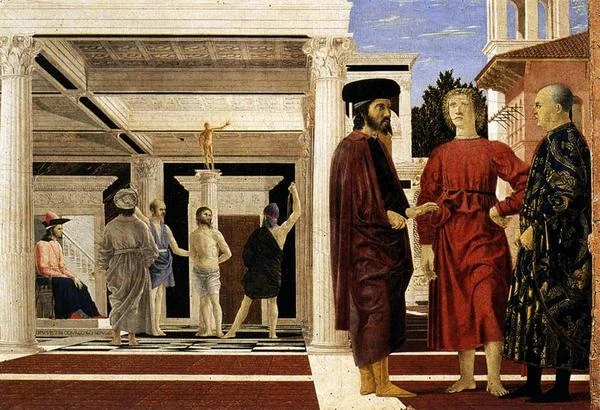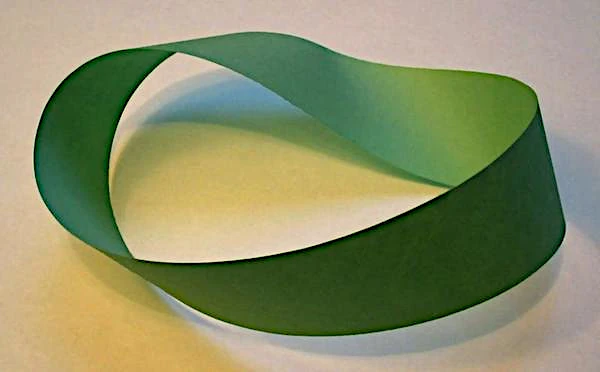
The notion of space has dozens of definitions depending on context, but none fully captures its essence. Its evolution, tied to the history of mathematics and physics, reflects a journey from primitive intuition to extreme complexity. How has this concept transformed our understanding of the world?
For primitive societies, studied by ethnologists, space does not exist as an abstract concept: the center of the world coincides with the center of the village. In ancient Greece, particularly during the time of Pericles (around 495 BCE), space was conceived as a limited extension occupied by bodies. With Plato (428–348 BCE), philosophy and science emerged: space became the void receptacle in which everything exists (as described in the Timaeus). Aristotle (384–322 BCE) defined it as the sum of places.
The first classical formalization of space appeared with Euclidean geometry (around 300 BCE). Space was idealized: points, lines, polyhedra, and conic sections deployed according to precise mathematical rules (length, area, volume). This model dominated during the Islamic Golden Age (≈750 to ≈1250), a period marked by the translation of Greek, Indian, and Persian scientific works into Arabic.
During the Renaissance, artists like Piero della Francesca revolutionized the representation of space through perspective, foreshadowing projective geometry. The 17th century marked a turning point with the Newtonian revolution: Newton laid the foundations for an absolute physical space and universal time, immutable and independent of the phenomena they contain.
Newton established that:
This framework, dominant until the 20th century, was challenged by the theory of relativity. Today, in black holes, space and time merge, illustrating the limits of the Newtonian model.

In the 19th century, mathematics radically redefined space: it was no longer flat but curved, with variable curvature (zero, positive, or negative). For example:
Curvature is described by a tensor, a complex mathematical object that varies across regions of space. "Bumpy" surfaces, like that of an ocean, are concrete examples: each point has a distinct curvature.
N.B.:
A tensor is a mathematical object generalizing vectors and matrices, capable of describing geometric or physical properties independent of the coordinate system. In general relativity, the Riemann curvature tensor (denoted \( R^\rho_{\sigma\mu\nu} \)) measures how spacetime curves under the influence of matter, while the metric tensor \( g_{\mu\nu} \) defines distances and angles in this space. For example, the curvature of a sphere (always positive) or that of a saddle (negative) is expressed via these tensors.
In the 20th century, Einstein integrated time into space: spacetime, a concept introduced by Hermann Minkowski in 1908, is a 4-dimensional variety (3 spatial + 1 temporal) with variable curvature. This curvature is gravity (General Theory of Relativity, 1915). All objects, from planets to photons, follow this dynamic geometry. "Between the Earth and the Moon, there is geometry." The differential geometry of Bernhard Riemann (1826–1866) enabled this advance by allowing non-Euclidean spaces, where the angles of a triangle do not necessarily sum to 180°.
N.B.:
Differential geometry is a branch of mathematics that studies the geometric properties of curves, surfaces, and manifolds using differential calculus. It describes curved spaces (like the Earth's surface or spacetime) using tools such as derivatives, tensors, and differential equations. For example, it explains why the sum of the angles of a triangle drawn on a sphere exceeds 180° (unlike Euclidean geometry), or how the curvature of spacetime influences the motion of planets in general relativity.
In 1985, Alain Connes developed non-commutative geometry, where:
This approach reflects the principles of quantum mechanics: Heisenberg's uncertainty principle forbids simultaneously knowing a particle's position and velocity with precision. In 1924, Louis de Broglie (1892–1987) postulated that all matter has an associated wave, whose wavelength depends on temperature (de Broglie wavelength).
N.B.:
Non-commutative geometry is a mathematical theory developed by Alain Connes in the 1980s, where the coordinates of space no longer commute (i.e., \(x \cdot y \neq y \cdot x\)). This revolutionary approach describes spaces where the classical notion of a point disappears, as in the quantum world. For example, in quantum mechanics, the position and velocity of a particle cannot be measured simultaneously with precision (Heisenberg's uncertainty principle), reflecting this fundamental non-commutativity of space at the microscopic scale.
Fiber spaces introduce a complex structure:
Applications:
Over 2500 years, the concept of space has evolved: from Euclid to non-Euclidean varieties, from non-commutative geometry to fiber spaces. Yet, no theory successfully unifies spacetime at subatomic and macroscopic scales. Physicists like Carlo Rovelli (loop theory) suggest that space and time might emerge from quantum processes, rather than existing a priori. What if these notions were merely perceptual illusions, convenient tools for interpreting reality?
| Period / Author | Date | Key Concept | Comments | Impact on Science |
|---|---|---|---|---|
| Primitive Societies | Before -3000 | Non-conceptualized space | Center of the world = center of the village (ethnology). No distinction between space/time. | Mythico-religious vision, no mathematical formalization. |
| Plato | -428 to -348 | Space = receptive void (Timaeus) | Space is an immaterial container where everything exists. First philosophical approach. | Foundation of Western metaphysics. |
| Aristotle | -384 to -322 | Space = sum of places | Space is defined by the objects that occupy it (Aristotelian physics). | Major influence until the Middle Ages. Rejection of the idea of vacuum. |
| Euclid | ~ -300 | Euclidean geometry (flat space, axioms) | 5 postulates (including the 5th on parallels). Absolute, infinite, homogeneous space. | Basis of mathematics for 2000 years. Applications in architecture and astronomy. |
| Islamic Golden Age | 750–1250 | Translation/extension of Greek works | Preservation and development of knowledge (Alhazen, Omar Khayyam). | Transmission to Europe via Spain (Toledo, Cordoba). |
| Renaissance | 15th–16th centuries | Artistic perspective (Piero della Francesca) | Mathematical representation of depth (projective geometry). | Revolution in art and optics. Prefigures modern science. |
| Newton | 1687 | Absolute space and time (Principia) | Space = immutable "stage" where phenomena occur. Universal time. | Foundation of classical mechanics. Framework for the scientific revolution. |
| Gauss, Bolyai, Lobachevsky | 18th–19th centuries | Non-Euclidean geometries | Possible curvature of space (e.g., hyperbolic geometry). | Challenged Euclid's 5th postulate. Prepared the ground for relativity. |
| Riemann | 1854 | Differential geometry (curved n-dimensional spaces) | Introduction of manifolds and curvature tensor. | Key mathematical tool for Einstein. |
| Minkowski | 1908 | 4-dimensional spacetime | Fusion of space + time into a continuum. Metric ds² = c²dt² - dx² - dy² - dz². | Conceptual unification preparing special relativity. |
| Einstein | 1915 | General relativity: dynamic and curved spacetime | Matter curves spacetime (equation Gμν = 8πTμν). | Revolution in physics: gravity = geometry. Confirmed by the 1919 eclipse. |
| Alain Connes | 1985 | Non-commutative geometry | Coordinates do not commute (xy ≠ yx). Disappearance of the "point". | Applications in quantum physics (string theory, standard model). |
| Modern Theories | 1990–present | Fiber spaces, loop theory, holography | Emergent space (e.g., spacetime as a spin network). Black hole = singularity. | Attempts to unify with quantum mechanics (quantum gravity). |
| Black Holes | Observed in 2019 | Collapse of spacetime | Infinite curvature (singularity). Event horizon = limit of our physics. | Challenge for current theories. Window to a "new physics". |
| Speculative Theories | Future | Discrete spacetime, multiverse, informational space | Hypotheses: Planck pixels, brane universes, space as a qubit network. | Leads for a theory of everything (e.g., M-theory, loop quantum gravity). |